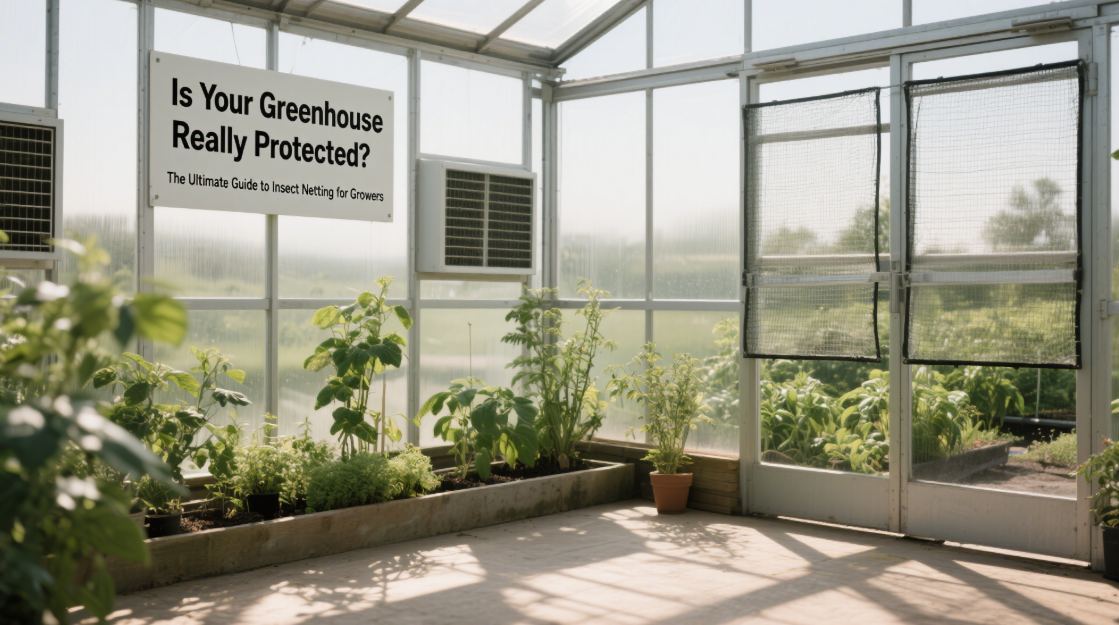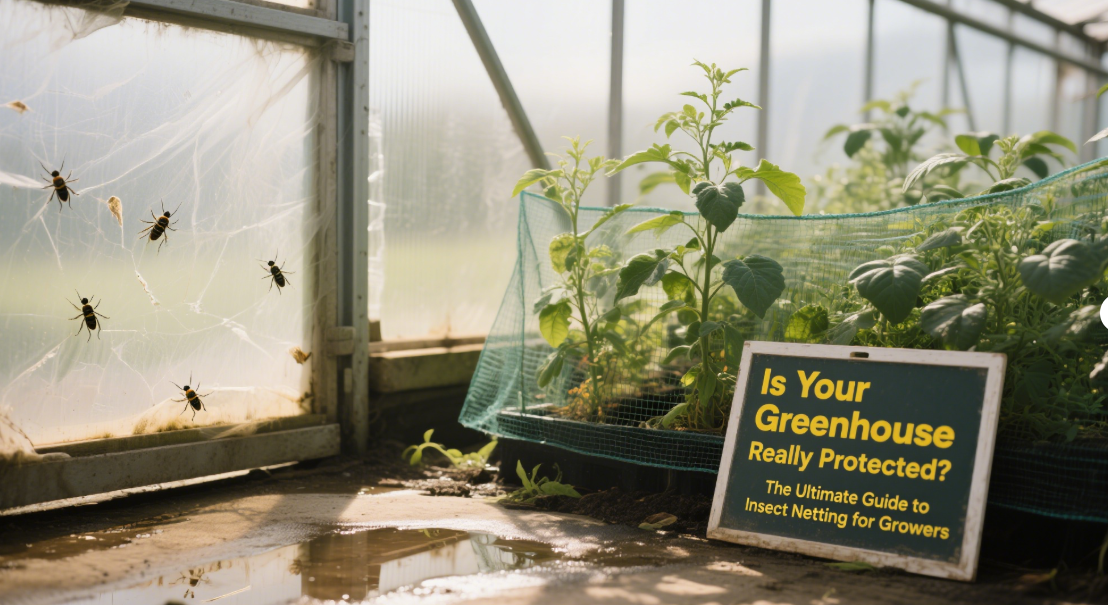You’ve invested in a greenhouse to grow healthier crops, extend your growing season, and boost yields. But there’s one tiny problem — insects.
From whiteflies swarming your tomatoes to thrips damaging your strawberries, pests can turn your investment into frustration. That’s where insect netting comes in. It acts like a silent guard, keeping pests out while letting fresh air in. Simple, effective, and essential — but only if done right.
This guide breaks down how to choose, install, and maintain greenhouse insect netting so you can protect your plants the smart way.
What Is Insect Netting, and Why Does It Matter?
Greenhouses are great at creating ideal growing conditions — unfortunately, for pests too. Once inside, insects multiply fast. Insect netting acts as a physical barrier, stopping them before they ever enter.
In northern China, a tomato farm that skipped netting lost 20% of its yield to whiteflies. The neighboring greenhouse, protected with 60-mesh netting, remained pest-free with minimal chemical use. The difference? Just one smart layer.
Mesh Size: What’s the Right Fit for Your Crops?
Not all insect netting is created equal. The “mesh” number refers to how many holes are in one inch of fabric. The higher the mesh, the smaller the holes — and the smaller the pests it can block.
Higher mesh nets offer stronger protection but reduce airflow. That’s why choosing the right balance for your pest threat and climate is key. In southern China, one chili farm upgraded from 40 to 80 mesh to block thrips and immediately saw cleaner plants and fewer issues.
When it comes to material, polyethylene (PE) is budget-friendly and widely used, while polypropylene (PP) is stronger and more UV-resistant. Some growers prefer UV-treated mesh, which can last 5+ years — great for sunny regions.

How to Install Netting Without Leaving Gaps
Choosing the right net is only half the job — proper installation makes all the difference. Even a tiny gap can invite a major infestation.
Key tips:
Use aluminum rails or clamps to secure the net tightly over vents and windows.
Set up double-door buffer zones at entry points to prevent pests from slipping in with workers.
Seal small gaps at floor drains, cables, or irrigation points with extra mesh and weather tape.
At Chengfei Greenhouse, a leading greenhouse solution provider, netting is integrated into their modular structures. Every vent, doorway, and access point is sealed into a complete system, reducing the risk of pest intrusion from edge areas.
Do I Need to Clean My Insect Netting?
Yes — netting works best when it’s clean. Over time, dust and debris clog the holes, reducing airflow and effectiveness. Plus, UV and wind can cause wear and tear.
Set a regular maintenance schedule:
Rinse gently with mild soap and water every 2–3 months
Inspect for rips or worn areas, especially after storms or high winds
Patch small holes with mesh tape. Replace larger sections as needed
In a Beijing smart greenhouse, monthly “net checks” include cleaning and UV light scans to detect invisible wear. Preventive care like this keeps the structure sealed and the crop protected.
Is Insect Netting Worth the Cost?
The short answer? Absolutely.
Though there’s an upfront investment, netting reduces pesticide use, increases crop quality, and helps meet organic or low-residue standards — all of which lead to better market value. In Sichuan, one greenhouse cut pesticide use by 30% and earned higher prices after passing organic tests. Not only did the netting pay for itself, it boosted profits.
In addition, less chemical use means lower labor costs, a safer work environment, and fewer headaches from pest outbreaks.

What’s Next for Insect Netting?
Insect netting is no longer just a piece of fabric — it’s part of an integrated system for smart, sustainable farming.
Innovations include:
Dual-purpose nets with UV-blocking and shade functions
Smart netting systems linked to climate sensors that open and close automatically
Combination pest-control zones using insect nets, sticky traps, and light traps
Growers are treating their greenhouses like living systems — and insect netting is the first line of defense.
Want better crops, cleaner produce, and fewer pests? Don’t overlook the power of a well-installed insect net. It might just be your greenhouse’s best silent partner.
Welcome to have a further discussion with us.
Email:Lark@cfgreenhouse.com
Phone:+86 19130604657
Post time: Jul-01-2025







 Click to Chat
Click to Chat